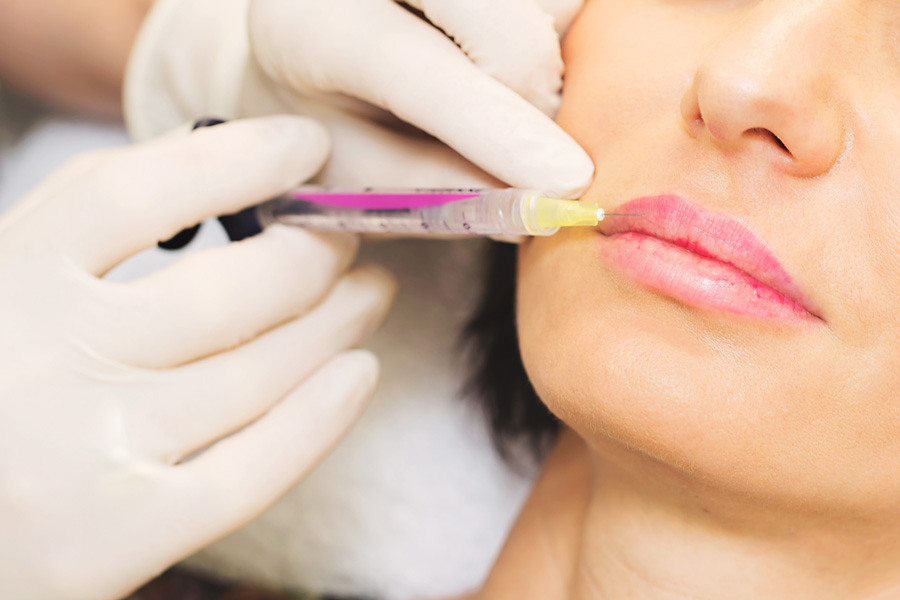Article at a glance
- Before getting dermal fillers, key factors include skin type and treatment expectations.
- How dermal fillers can be combined with other treatments for enhanced results.
- Importance of choosing a skilled practitioner and proper aftercare for the best outcomes.
Key Considerations Before Opting For Dermal Fillers
Before opting for dermal fillers, it’s essential to consider several factors to ensure the best results. Dermal fillers are a non-invasive treatment that restores volume, smooths wrinkles and enhances facial contours. However, they may not be suitable for everyone. It’s important to:
Assess Your Skin Type and Concerns: Dermal fillers work best for those with moderate wrinkles, fine lines, or volume loss. If you have other skin concerns, like severe acne or active infections, consult a practitioner first.
Understand the Procedure: While generally safe, it’s important to know the treatment process, potential risks, and realistic outcomes.
What Are the Essential Factors to Think About?
When deciding whether dermal fillers are right for you, consider these essential factors:
Longevity of Results: Dermal fillers are not permanent. The results typically last between six months to two years, depending on the type of filler and treatment area. Regular touch-ups may be needed for continued results.
Cost: Pricing can vary based on the type of filler used and the number of areas treated. Make sure to factor this into your decision.
Health Considerations: Ensure you’re in good overall health and free from any conditions that may impact healing or increase the risk of complications.
Expertise of the Practitioner: Choosing an experienced, qualified professional is crucial for achieving natural-looking results and minimizing potential side effects.
How to Prepare for Your Dermal Filler Appointment?
Proper preparation can improve results and a smoother experience during and after your dermal filler treatment. Here’s what you can do before your appointment:
Consultation: During your consultation, discuss your goals with the practitioner and be clear about what you want to achieve. A thorough consultation ensures a treatment plan tailored to your needs.
Avoid Blood Thinners: To reduce the risk of bruising, avoid blood-thinning medications or supplements, such as aspirin, ibuprofen, or fish oil, for at least a week before the procedure.
Stay Hydrated: Drinking plenty of water helps keep your skin hydrated, which may improve the effectiveness of the fillers.
Skin Care: Avoid exfoliating or using harsh skincare products, especially those with retinol, a few days before the procedure to prevent irritation.
Arrive Makeup-Free: Arriving without makeup will make the process smoother, and your practitioner can better assess the areas to be treated.
Can Dermal Fillers Be Combined with Other Treatments?
Yes, dermal fillers can often be combined with other aesthetic treatments to enhance results. Some common combinations include:
Anti-Wrinkle Injections and Dermal Fillers: While dermal fillers restore volume and plump up wrinkles, anti-wrinkle injections target muscle movement to soften dynamic lines, such as crow’s feet or forehead lines.
Profhilo and Dermal Fillers: Profhilo hydrates and tightens skin through deep collagen stimulation. When paired with dermal fillers, it can provide a more comprehensive rejuvenation by improving both skin texture and volume.
Dermal Needling and Dermal Fillers: Dermal needling is a great complement to dermal fillers. It enhances collagen production, promoting smoother skin that helps dermal fillers work even more effectively, especially for those with fine lines, scars, or skin texture issues.
Always consult a qualified professional to ensure the combination of treatments is right for your skin type and desired results.
What to Expect After Dermal Filler Treatment
After your dermal filler treatment, you may notice some immediate improvements, such as smoother skin and restored volume. However, mild swelling, redness, or bruising is common, and these side effects typically resolve within a few days to a week. Using a cold compress can help reduce swelling.
To ensure the best results, avoid touching or massaging the treated areas for the first 24 hours and refrain from strenuous exercise for 48 hours. While the initial results are visible immediately, the full effect may take up to two weeks as the filler settles. Follow-up appointments may be necessary to assess your results.
Choosing the Right Practitioner for Dermal Fillers
Consulting with a qualified professional ensures the dermal filler procedure is safe and effective. At Accent on Skin, our team of experts is highly trained in facial aesthetics, offering personalized consultations to address your unique needs. We encourage potential clients to review our practitioners’ qualifications, explore before-and-after photos, and read patient testimonials to gain confidence. In addition to dermal fillers, we offer various Skin treatments tailored to your skincare goals. As a leading skin care clinic in Wellington, we provide a pricing guide to help you make








